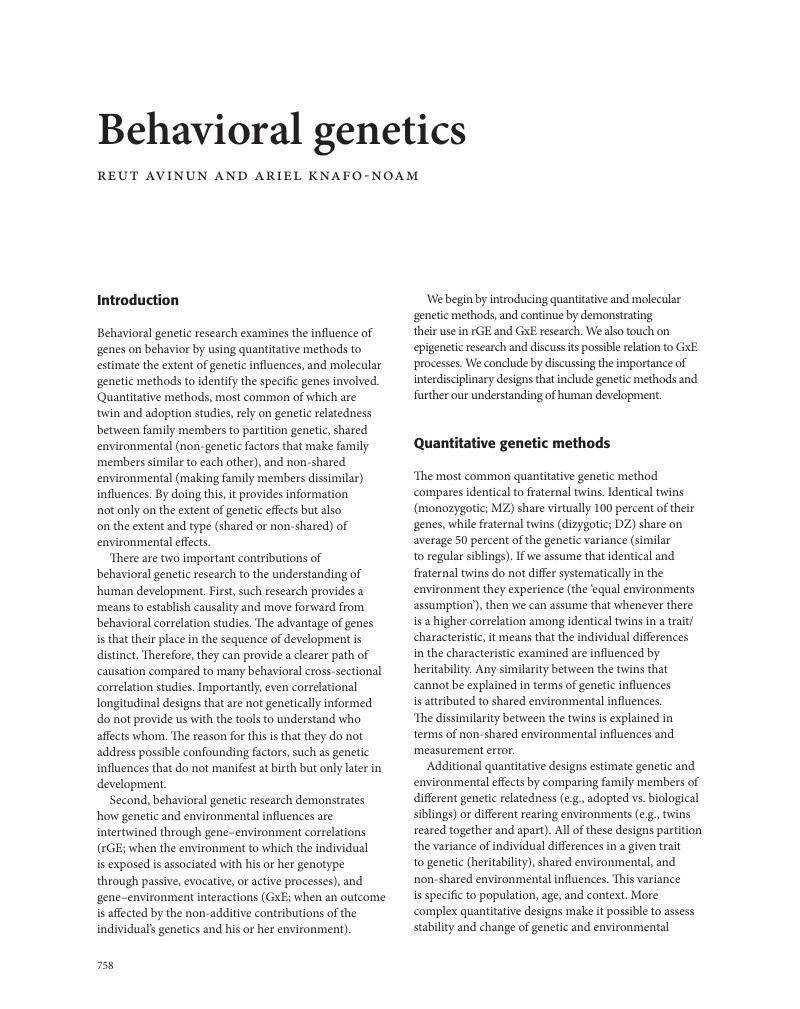Book contents
- The Cambridge Encyclopedia of Child Development
- Child Development
- Copyright page
- Dedication
- Contents
- Contributors
- Editorial preface
- Foreword
- Acknowledgments: External Reviewers
- Introduction Study of child development: an interdisciplinary enterprise
- Part I Theories of development
- Part II Methods in child development research
- Part III Prenatal development and the newborn
- Part IV Perceptual and cognitive development
- Part V Language and communication development
- Part VI Social and emotional development
- Part VII Motor and related development
- Part VIII Postnatal brain development
- Part IX Developmental pathology
- Part X Crossing the borders
- Anthropology
- Behavioral embryology
- Behavioral genetics
- Biopsychology of sex differences
- Connectomics
- Developmental genetics
- Exercise science
- Linguistics
- Nutritional sciences
- Pediatrics
- Primatology
- Sociology
- Part XI Speculations about future directions
- Book part
- Author Index
- Subject Index
- Plate Section (PDF Only)
- References
Behavioral genetics
from Part X - Crossing the borders
Published online by Cambridge University Press: 26 October 2017
- The Cambridge Encyclopedia of Child Development
- Child Development
- Copyright page
- Dedication
- Contents
- Contributors
- Editorial preface
- Foreword
- Acknowledgments: External Reviewers
- Introduction Study of child development: an interdisciplinary enterprise
- Part I Theories of development
- Part II Methods in child development research
- Part III Prenatal development and the newborn
- Part IV Perceptual and cognitive development
- Part V Language and communication development
- Part VI Social and emotional development
- Part VII Motor and related development
- Part VIII Postnatal brain development
- Part IX Developmental pathology
- Part X Crossing the borders
- Anthropology
- Behavioral embryology
- Behavioral genetics
- Biopsychology of sex differences
- Connectomics
- Developmental genetics
- Exercise science
- Linguistics
- Nutritional sciences
- Pediatrics
- Primatology
- Sociology
- Part XI Speculations about future directions
- Book part
- Author Index
- Subject Index
- Plate Section (PDF Only)
- References
Summary

Information
- Type
- Chapter
- Information
- The Cambridge Encyclopedia of Child Development , pp. 758 - 763Publisher: Cambridge University PressPrint publication year: 2017
References
Further reading
Acknowledgments
We would like to thank Dr. William Gilks for his valuable comments on an early version of this entry. Preparation of this manuscript was supported by Starting Grant no. 240994 from the European Research Council (ERC) to Ariel Knafo. Reut Avinun is partly supported by a Kaye Einstein scholarship.
References
Accessibility standard: Unknown
Why this information is here
This section outlines the accessibility features of this content - including support for screen readers, full keyboard navigation and high-contrast display options. This may not be relevant for you.Accessibility Information
- 1
- Cited by
